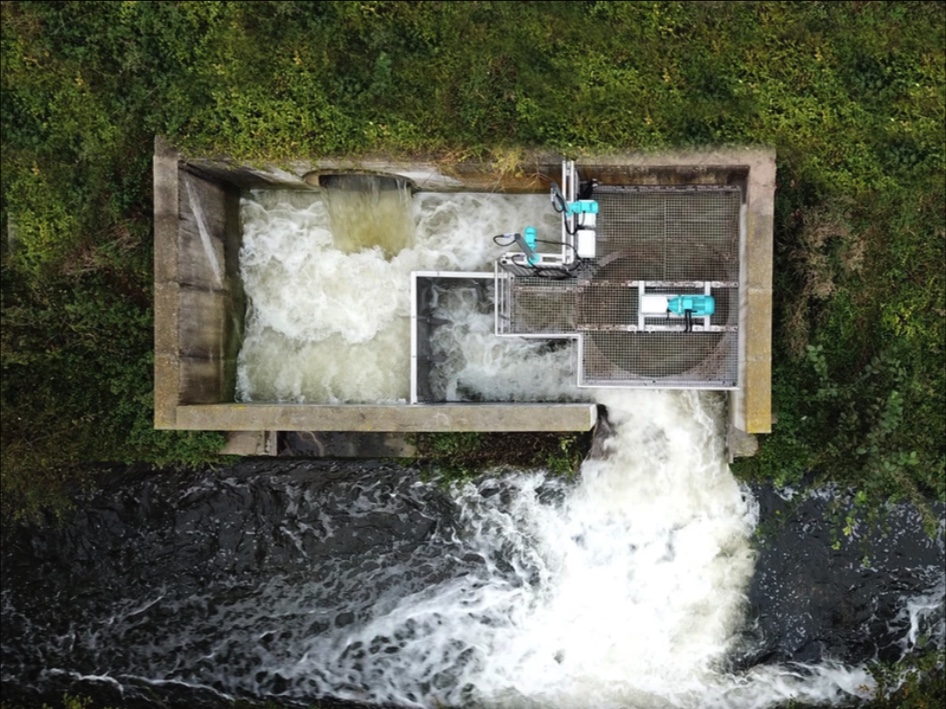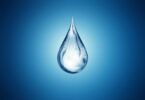Exclusive Interview: H2O Global News Editor, Siôn Geschwindt, spoke with Turbulent Hydro Co-founder, Geert Slachmuylders; CEO, Walter J.R. Buydens; and Sales Director, Maria Elvira Zeman, about the company’s innovative vortex hydroelectric turbines that help remote communities access clean energy, and industries offset carbon emissions.
Hydropower is set to become a critical component of the clean energy mix, offering renewable generation and storage for other renewables such as wind and solar. Although hydropower has historically involved building large dams, there is vast – and largely untapped – potential to generate small-scale energy from the world’s rivers and streams. Wherever water flows, so does energy.
One company rethinking the way we harness water power is Belgium-based tech start-up, Turbulent Hydro, who have developed a dam-free, eco-friendly vortex turbine.
Born from years of R&D by founders Geert Slachmuylders and Jasper Verreydt during their time at the University of KU Leuven, Turbulent Hydro aim to make hydropower as simple, cost-effective and sustainable as possible, particularly for rural communities where access to electricity isn’t necessarily a given.
Water power
In 2019, 770 million people had no access to electricity. This energy deficit hinders all aspects of daily life – from education and health to safety and economic development. In 2015, 60-70 percent of business owners in Sub-Saharan Africa said that a lack of power was the number one factor stunting their growth.
Not only is access a problem in some areas, but over 70% of the world’s electricity is still generated from fossil fuels.
Not only is access a problem in some areas, but over 70% of the world’s electricity is still generated from fossil fuels. Transitioning to renewable energies is crucial if we are to avoid the worst impacts of climate change, which are predicted to impact low-income communities most severely.
Hydropower is a reliable, clean source of electricity and, if developed responsibly, has the potential to electrify off-grid communities and mitigate climate change.
Micro (5 kW – 100 kW) and Mini (100 kW – 1 MW) hydropower projects are small-scale, and cater to the immediate needs of communities, cutting ties to dirty energy sources like diesel generators and kerosene lamps.
But their potential goes beyond the basics. Wherever water flows fast enough, small-scale hydro can be scaled to provide anyone, from home owners to big industries, with clean, reliable energy.
The vortex system
Vortex turbine installed at the Green School in Bali, Indonesia.
Hydropower works by harnessing energy from river flow and change in elevation – often referred to as ‘head’. Traditionally, hydropower projects construct dams to create a greater head, leaving the power generation potential from low head rivers remaining largely unexploited.
“Most hydro technology cannot operate below a head of 4m,” said Turbulent Hydro Co-founder, Geert Slachmuylders. “However, our vortex turbine can operate with as little as 1.5m drop, opening up many potential sites that would otherwise be unfeasible.”
Turbulent Hydro construct their vortex system next to a drop in the river’s course. A channel directs some of the flowing water into a circular shaped basin; creating a vortex, which turns the turbine and produces electricity.
“In low head systems, water has a habit of making a vortex which can sometimes cause corrosion in the turbine,” said Slachmuylders. “So instead of fighting it, we decided to make the vortex as big as possible and use it to our advantage.”
The vortex increases the rotational speed of the turbine, which produces between 15KW – 70KW of electricity per unit, depending on the river’s flow and head. Because rivers have several drop points, multiple turbines can be setup in series along a river’s course, to produce up to 1MW – enough to power 1000 homes.
The design also allows fish to safely travel through the system unharmed.
The tech is easy to assemble, transport and maintain, and can be constructed and operated by anyone with basic civic and electrical skills.
The system is resilient too. Low rotation rates and curved blades, as well as a mesh protector, keep the motor running even when the water has lots of debris. Importantly, the design also allows fish to safely travel through the system unharmed.
The resilience of the Turbulent vortex system was tested during a flood in Bali, Indonesia, in 2019. The Green School, located along the Ayung River, installed Turbulent’s technology at their educational centre to reduce their reliance on the grid.
The school had tried and failed to sustainably harness hydropower for years. In 2016, a flood destroyed the previous system but the school remained determined. They enlisted the help of Turbulent Hydro who designed a prototype that could withstand future incidents.
The project has been a success; the turbine has already survived a flood completely intact, and as of October 2019, the institution of over 500 students runs entirely on renewable energy: 23.7% solar, and 76.3% hydro.
Broader impacts
Key to the success of the Green School project was working with the local community to site, construct and operate the technology, using local knowledge and skills wherever possible.
“The whole setting of the project must take into account all the stakeholders to come up with the best solution,” said Turbulent Hydro Sales Director, Maria Elvira Zeman. “That is why all of our projects are adapted to the river and the specific needs of the community.”
In the indigenous Mapuche Community of Cunco, Chile, the vortex turbine was installed by local people with the help of Turbulent engineers, and provides energy to six households.

Geert Slachmuylders (left) & Juana Paillalef, Mapuche Community Chief (right)
“Our turbines don’t displace communities or flood fertile lands,” said Turbulent Hydro CEO, Walter J.R. Buydens. “I think all companies should look at the SDGs and enhance and enforce these principles at all levels.”
Ensuring that projects are sustainable and have a broader social impact is crucial when working with remote communities. However, all technologies come at a price, and many communities need financial support to get off the ground.
“We help our clients source funding from subsidies and grants,” said Buydens. “Thankfully, development banks are increasingly looking to sponsor these kinds of projects to help the energy transition in rural areas.”
Investors and governments are starting to notice that, when done right, hydropower offers immense potential to electrify rural communities with clean energy and support the expansion of other renewables.
“The big advantage of hydropower is that it is 100% stable and reliable 24/7 throughout the year,” said Buydens.
“Hydropower can also complement the other members of the renewable ‘family’, like solar and wind,” said Zeman. “Hydropower has always been linked to big dams, but micro and small-scale projects can tap into energy for remote communities, and industries throughout the world who want to reduce their carbon emissions.”
A pilot project at Carré de Réunion, a chemical-free wastewater treatment plant in Versailles, France, uses the Turbulent vortex to offset some of its electricity usage.

Versailles pilot project
Water industries across the world have committed to net-zero emissions, and one thing this industry doesn’t lack is access to flowing water. It makes sense for treatment plants and water networks to use small-scale, decentralised hydro to meet climate targets, increase resiliency and reduce operational costs.
Flowing futures
Whether it’s a remote school in Bali, or the Palace of Versailles, Turbulent Hydro is helping make hydropower accessible and affordable. By designing a relatively simple system, directing climate finance where it is most needed, and taking a community centred approach, the company is truly ‘rethinking hydro’.
Turbulent is now poised to transform from a R&D start-up to a fully-fledged company. After years of refining the technology, they are ready to go commercial. Backed by EU funding, Turbulent’s mission is to expand the small-scale hydro industry and rollout their technology and services globally.
Slachmuylders concluded: “It’s low hanging fruit; most of the infrastructure is already there and if you can extract energy from it cost-effectively, and the finance is there, why wouldn’t you? It helps our whole society in the energy transition.”
Do you have an article that you would like to share? Submit your article here or keep up with the latest news from the water industry and wastewater industry by subscribing to our weekly newsletter.







